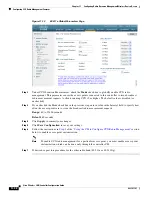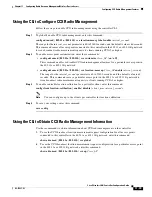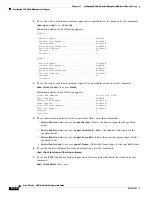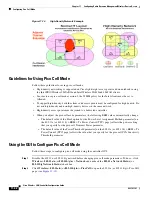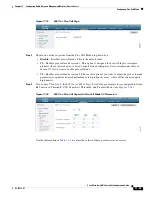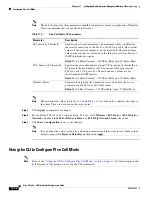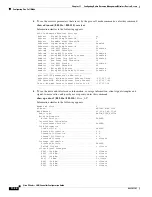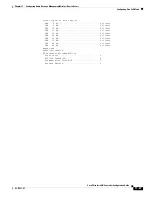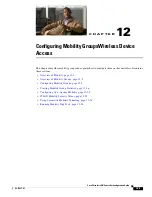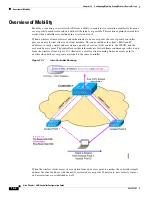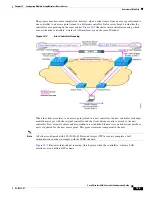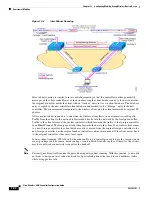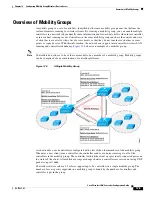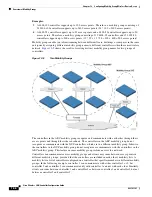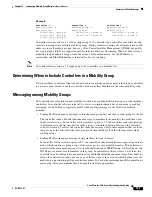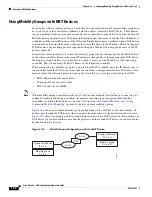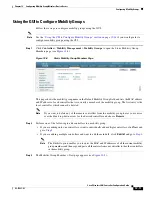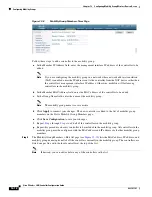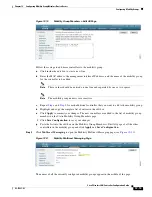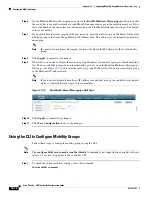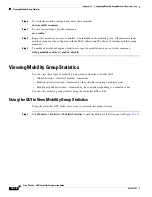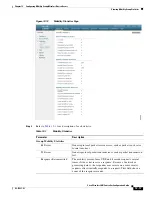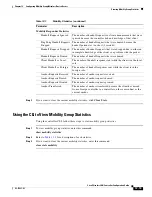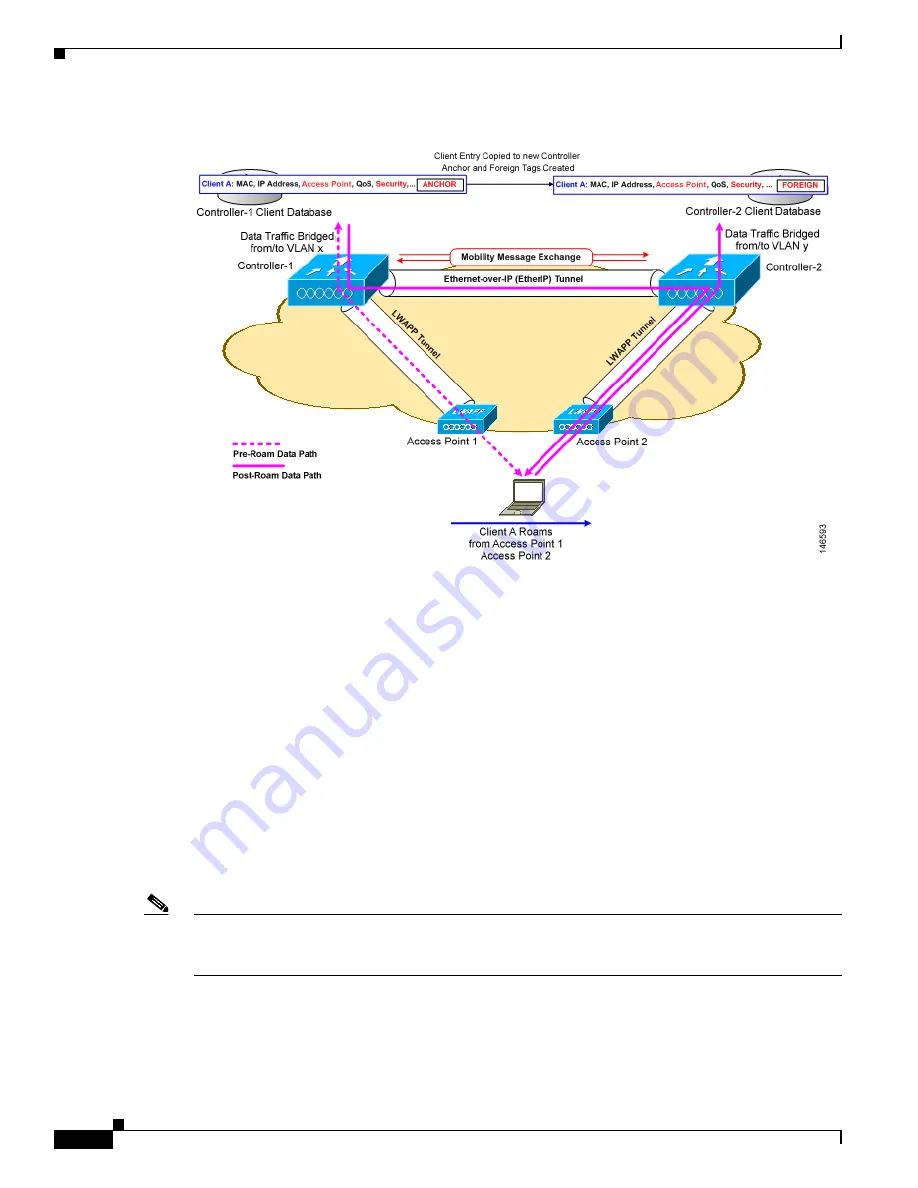
12-4
Cisco Wireless LAN Controller Configuration Guide
OL-17037-01
Chapter 12 Configuring Mobility GroupsWireless Device Access
Overview of Mobility
Figure 12-3
Inter-Subnet Roaming
Inter-subnet roaming is similar to inter-controller roaming in that the controllers exchange mobility
messages on the client roam. However, instead of moving the client database entry to the new controller,
the original controller marks the client with an “Anchor” entry in its own client database. The database
entry is copied to the new controller client database and marked with a “Foreign” entry in the new
controller. The roam remains transparent to the wireless client, and the client maintains its original IP
address.
After an inter-subnet roam, data to and from the wireless client flows in an asymmetric traffic path.
Traffic from the client to the network is forwarded directly into the network by the foreign controller.
Traffic to the client arrives at the anchor controller, which forwards the traffic to the foreign controller
in an EtherIP tunnel. The foreign controller then forwards the data to the client. If a wireless client roams
to a new foreign controller, the client database entry is moved from the original foreign controller to the
new foreign controller, but the original anchor controller is always maintained. If the client moves back
to the original controller, it becomes local again.
In inter-subnet roaming, WLANs on both anchor and foreign controllers need to have the same network
access privileges and no source-based routing or source-based firewalls in place. Otherwise, the clients
may have network connectivity issues after the handoff.
Note
Currently, multicast traffic cannot be passed during inter-subnet roaming. With this in mind, you would
not want to design an inter-subnet network for SpectraLink phones that need to send multicast traffic
while using push to talk.

